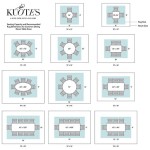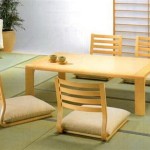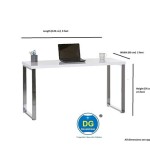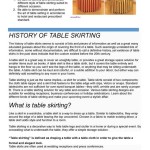Decorative Trays: Elevating Coffee Table Aesthetics and Functionality
Decorative trays, particularly those designed for coffee tables, serve as versatile accessories that enhance both the aesthetic appeal and functional organization of a living space. Beyond their purely decorative role, these trays provide a practical surface for arranging items, preventing clutter, and creating a cohesive focal point within a room. The selection of a suitable decorative tray involves considerations of size, shape, material, style, and intended use.
The widespread use of coffee tables as a central point in living rooms makes them prime locations for decorative displays. A carefully chosen tray can transform a simple coffee table into a visually engaging and organized surface. The strategic placement of items such as books, candles, plants, and remote controls within a decorative tray contributes to a more polished and intentional design aesthetic.
Understanding the Purpose and Functionality of Coffee Table Trays
The primary purpose of a coffee table tray extends beyond mere decoration. These trays offer a defined space for arranging items, thereby consolidating visual clutter. They act as a container for often-used objects, preventing them from being randomly scattered across the table's surface. This contributes to a cleaner and more organized appearance, fostering a sense of calm and order in the living space.
Moreover, coffee table trays serve a protective function. They can safeguard the coffee table surface from potential stains, scratches, and water rings caused by drinks or hot items. This is particularly important for coffee tables made from delicate materials such as wood or glass. The use of a tray minimizes direct contact between potentially damaging items and the table surface, prolonging the table's lifespan and preserving its aesthetic quality.
Functionality is further enhanced by the tray's portability. A tray can be easily moved from one location to another, allowing for flexible arrangements and uses. For example, a tray containing drinks and snacks can be readily transported from the kitchen to the coffee table, facilitating convenient serving. In addition, a smaller tray might be used to collect items for quick clean-up if unexpected guests arrive. The ability to relocate items within the tray offers a degree of flexibility not easily achievable with fixed decorative arrangements.
Finally, it is important to consider the size and shape of the coffee table and the surrounding space when selecting a tray. A tray that is too large can overwhelm the table, while one that is too small might appear insignificant and fail to provide sufficient functionality. The shape of the tray should complement the shape of the table, with rectangular or oval trays often working well on rectangular or oval tables, and round trays often complementing round tables. The overall proportions should maintain a sense of balance and harmony within the room.
Material Choices and Their Impact on Style
The material from which a decorative tray is constructed significantly influences its overall style and appearance. A wide range of materials are used in the manufacture of these trays, each offering unique aesthetic and functional properties. The choice of material should align with the desired design aesthetic and the overall décor of the living space.
Wooden trays offer a classic and versatile option. They can range in style from rustic and farmhouse to sleek and modern, depending on the type of wood, finish, and design details. Wooden trays typically provide a warm and natural feel, adding a touch of organic texture to the coffee table. They are also relatively durable and can withstand everyday use. Different wood types, such as oak, walnut, or bamboo, offer varying grain patterns and color tones, allowing for further customization of the tray's appearance.
Metal trays provide a more contemporary and industrial aesthetic. Options include stainless steel, brass, copper, and wrought iron, each with its unique visual characteristics. Metal trays often feature clean lines and minimalist designs, making them suitable for modern or minimalist interiors. They are also durable and easy to clean, making them a practical choice for coffee tables. Brass and copper trays can add a touch of warmth and sophistication, while stainless steel trays offer a sleek and polished appearance.
Glass trays offer a light and airy feel. They can be clear, frosted, or tinted, allowing for a variety of design options. Glass trays are often used to display decorative items without obstructing the view of the coffee table surface. They can also create a sense of spaciousness and elegance. However, glass trays are more fragile than wood or metal trays and require more careful handling. They also tend to show fingerprints and smudges more readily, requiring more frequent cleaning.
Acrylic or Lucite trays offer a modern and transparent alternative to glass. They are lightweight, durable, and easy to clean. Acrylic trays are available in a variety of colors and shapes, allowing for creative design possibilities. Their transparency allows them to blend seamlessly into any decor style, while their durability makes them a practical choice for everyday use.
Mirrored trays add a touch of glamour and sophistication to the coffee table. They reflect light, creating a sense of brightness and spaciousness. Mirrored trays are often used to display decorative items such as candles or vases, enhancing their visual impact. However, mirrored trays can be more difficult to clean, as they tend to show fingerprints and water spots. They also require careful handling to avoid scratches or cracks.
Finally, natural materials such as rattan, seagrass, or woven fibers offer a bohemian or coastal vibe. These trays add texture and warmth to the coffee table, creating a relaxed and inviting atmosphere. They are often handcrafted, adding a unique and artisanal touch to the décor. Natural fiber trays are relatively lightweight and durable, but they may be more difficult to clean than other materials. They are also susceptible to moisture damage, so they should be kept away from spills and moisture.
Styles and Design Considerations for Coffee Table Trays
The style and design of a decorative tray should complement the overall aesthetic of the living space. A wide variety of styles are available, ranging from classic and traditional to modern and contemporary. The choice of style should reflect the homeowner's personal taste and the overall design scheme of the room.
Traditional trays often feature ornate details, such as carved wood, intricate patterns, or decorative handles. They are typically made from wood, metal, or a combination of both. Traditional trays are well-suited for formal living rooms with classic furniture and décor. They add a touch of elegance and sophistication to the coffee table, creating a sense of timeless style.
Modern trays typically feature clean lines, minimalist designs, and simple geometric shapes. They are often made from metal, glass, or acrylic. Modern trays are well-suited for contemporary living rooms with sleek furniture and minimalist décor. They add a touch of sophistication and elegance to the coffee table, creating a sense of streamlined style.
Rustic trays often feature distressed finishes, natural materials, and vintage-inspired details. They are typically made from wood, metal, or a combination of both. Rustic trays are well-suited for farmhouse-style or country-style living rooms. They add a touch of warmth and character to the coffee table, creating a sense of cozy charm.
Bohemian trays often feature vibrant colors, eclectic patterns, and global-inspired designs. They are typically made from natural materials, such as rattan, seagrass, or woven fibers. Bohemian trays are well-suited for eclectic or bohemian-style living rooms. They add a touch of personality and flair to the coffee table, creating a sense of artistic expression.
Coastal trays often feature light colors, nautical motifs, and natural materials, such as seagrass, shells, or driftwood. They are typically made from wood, metal, or a combination of both. Coastal trays are well-suited for coastal-style or beach-style living rooms. They add a touch of seaside charm and relaxation to the coffee table, creating a sense of breezy tranquility.
In addition to style, the shape and size of the tray are important design considerations. A rectangular or oval tray is often a versatile choice for a rectangular or oval coffee table. A round tray can soften the lines of a square or rectangular coffee table. The size of the tray should be proportional to the size of the coffee table. A tray that is too large can overwhelm the table, while a tray that is too small might appear insignificant.
Finally, the color and texture of the tray should complement the surrounding décor. A tray with a contrasting color can add visual interest, while a tray with a similar color can create a sense of harmony. A textured tray can add depth and dimension to the coffee table, while a smooth tray can create a sleek and polished look. The overall design of the tray should reflect the homeowner's personal style and the overall aesthetic of the living space.

Tray Coffee Table Rustic Wooden Ottoma Decor Decorating Tables

Long Metal Decorative Tray Pottery Barn

American Atelier Decorative Serving Tray Black Round 18 11 In X 1 96 Polyurethane 1630112 The Home Depot

Large Square Decorative Tray Farmhouse Coffee Table Decor Living Room

Slats Oblong Black Bamboo Decorative Tray 11329 The Home Depot

Hanobe Round Wood Decorative Tray Rustic Coffee Table Farmhouse Decor Brown Centerpiece Wooden Serving Trays Rounded For Kitchen Counter Boho Ottoman Home Com

Home Decor Under 50 Chronicles Of Frivolity Table Living Room Classic Decorating Coffee Tables

Kate And Laurel Er Brown Decorative Tray 219237 The Home Depot

Lunatic Craftwork Round Wood Tray For Coffee Table Serving Decorative Trays Home Decor In Buy

Beige Slats Round Bamboo Decorative Tray 11324 The Home Depot








